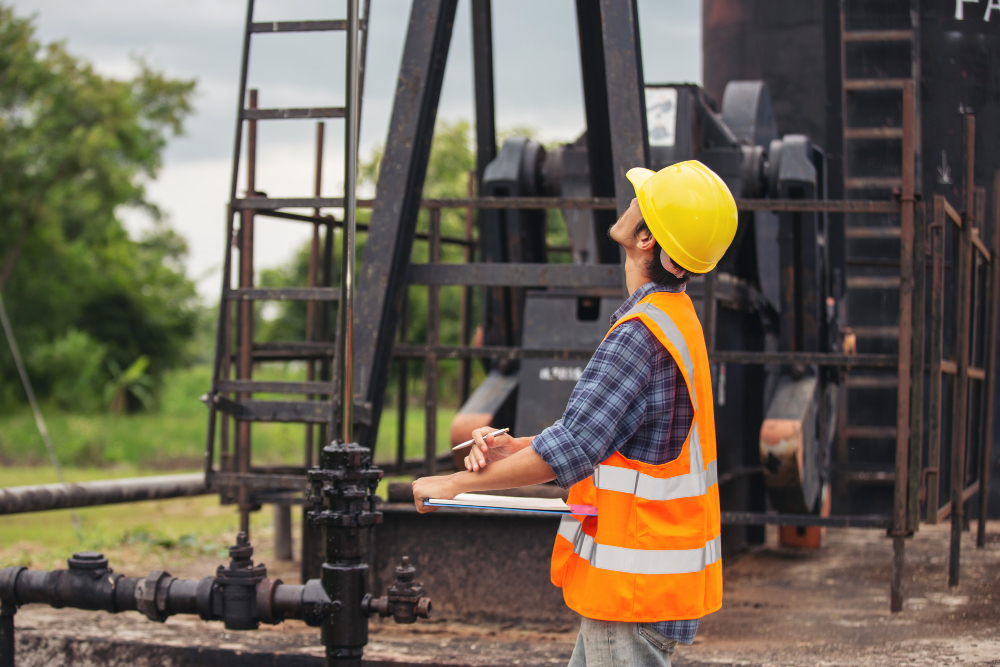Engineering Reliability: How DAE Dewatering Pumps Support Large-Scale Construction Operations
18 November 2025
5 Mins Read

- Understanding Dewatering In Large-Scale Construction Projects
- The Engineering Behind DAE Construction Dewatering Pumps
- Applications Of DAE Pumps In Construction Environments
- Benefits Of Using DAE Pumps For Construction
- Comparing DAE Construction Dewatering Pumps With Competitor Solutions
- Choosing The Right Pump: A Guide For Project Engineers
- Conclusion
Groundwater and surplus surface water management are more than simple logistical issues for large-scale buildings. It is more like an essential component of site safety, operational efficiency, and structural integrity.
The construction sites face all sorts of water-related challenges whether it is about digging a foundation, drilling tunnels, or installing infrastructure below the water table!
Anyone who’s spent even a day on a construction site knows water shows up exactly when you don’t want it.
Sometimes it’s seepage, sometimes it’s last night’s rain, sometimes it’s just the site being stubborn.
And when that happens, everything slows to a crawl. That’s pretty much why DAE construction dewatering pumps have become such a staple.
They’re tough, they move a surprising amount of water, and honestly, they save crews from a whole lot of headaches.
Over time, they’ve earned a good name for simply doing what they’re supposed to do, even when conditions are… bad.
So yeah, this article walks through why DAE Pumps matter, the tech behind them, and how they help crews manage water on sites where it just keeps coming back.
Understanding Dewatering In Large-Scale Construction Projects
Construction dewatering is the process of removing groundwater or surface water from the work area to keep it dry.
Easy to say, harder to deal with—especially when you’re dealing with deeper excavations where even a trickle can turn into a big problem fast.
Projects like subways, bridges, highways, and large commercial sites almost always have water issues in the background.
If it’s not managed well, schedules slip, the soil becomes mushy, and you get that awful feeling that everything is one rainstorm away from going wrong.
Proactive planning and the implementation of appropriate geotechnical and water management strategies are essential to mitigate these risks.
Common challenges teams run into include:
- Groundwater rises during long rainy stretches
- Water sneaking in from seepage or small floods
- Soil is losing stability because it’s holding too much moisture
- Delays caused by weak or unreliable pumps
The Engineering Behind DAE Construction Dewatering Pumps
DAE Pumps have been specifically engineered for challenging environments. DAE Pumps aren’t just slapped together; they’re built for job sites where equipment has to take hits and keep going.
They use heavy-duty materials that don’t give up easily to grit, corrosion, or debris-filled water, stuff that ruins cheaper pumps pretty quickly.
Some of the engineering highlights include:
- High-Capacity Flow Rates: They move water quickly enough to prevent it from pooling and getting in the way.
Rugged Construction: Abrasion-resistant materials help them withstand rough environments longer. - Portability and Modularity: Many models are surprisingly easy to move, which helps when the site layout changes every other day.
- Energy Efficiency: Motors are tuned to deliver strong output without chewing through unnecessary power.
- Automatic Controls: They can be monitored remotely and set to start or adjust automatically.
Basically, they’re designed not just to pump water but to adapt to the constant shifting conditions that happen on real job sites.
Applications Of DAE Pumps In Construction Environments
DAE construction dewatering pumps show up in all sorts of situations because they’re flexible. Some days it’s planned pumping. Other days, it’s more of a “water is everywhere and we need this gone now” kind of situation.
Common uses include:
- Excavation Dewatering: Keeping pits and trenches dry enough for foundations.
- Tunneling Operations: Handling subsurface water while tunnels or subway paths are being dug.
- Slope Stabilization: Reducing the risk of slides by removing trapped water.
- Utility Installation: Making sure underground pipeline work stays dry.
- Stormwater Management: Clearing out rainwater quickly after storms.
Their reliability makes them especially helpful when water appears without warning—something that happens more often than anyone wants to admit.
Benefits Of Using DAE Pumps For Construction
Contractors don’t just want pumps that look good on paper. They want something that works every day without drama. DAE Pump systems offer several practical benefits:
- Increased Site Safety: Clearing water means fewer slips, fewer equipment issues, and more stable ground.
- Operational Efficiency: Faster water removal keeps schedules from falling apart during bad weather.
- Reduced Environmental Impact: Proper drainage helps avoid runoff problems and keeps the site within regulations.
- Low Maintenance Requirements: They’re built tough, so they don’t need constant fixing.
- Long-Term Cost Savings: Better durability and efficiency mean less energy spent and fewer replacements.
In short, these pumps don’t just remove water—they help keep the entire project running smoother.
Comparing DAE Construction Dewatering Pumps With Competitor Solutions
With so many pumping brands out there, picking one can feel like guesswork. But DAE Pumps tend to stand out for a few reasons:
- Performance Consistency: They hold steady even when site conditions keep changing.
- Ease of Integration: They work with existing setups or as standalone systems without fuss.
- Customization: DAE offers pump options for everything from shallow water issues to deep groundwater problems with high solid content.
Plus, with choices like submersible, centrifugal, and garbage pumps, contractors usually find something that fits their exact situation.
Choosing The Right Pump: A Guide For Project Engineers
Selecting a pump isn’t just “pick one and go.” Engineers have to weigh several factors to make sure the pump can actually handle the job.
Important things to consider:
- Site Conditions: Water table height, soil behavior, and expected inflow.
- Pump Capacity: Flow rate and head requirements.
- Solids Handling: Whether the pump can push through debris or sand.
- Mobility Needs: Portable options may be necessary for shifting sites.
- Power Source: Diesel, electric, or hydraulic—depends on what the site can support.
DAE Pumps also guides teams in selecting the exact model that best fits their specific challenges.
Conclusion
As construction jobs get bigger and more complicated, proper water control becomes absolutely essential. DAE construction dewatering pumps offer the kind of reliability and performance that busy job sites rely on.
Whether they’re being used for tunneling, excavation, stormwater control, or emergency conditions, these pumps help keep projects on track, on budget, and much safer.
For companies seeking solid, proven dewatering solutions, DAE Pumps remains a trusted choice that delivers long-term value.

















